Although Barcelona is a travel hot-spot these days, it has always been one of Joanne’s and my very favorite destinations, and we’re planning to return once again this coming June. Of course, the climate is a huge draw, and the architecture, but it’s also the CATALAN CUISINE – especially the abundance and pristine quality of their seafood – that keeps us coming back.
Our favorite seafood restaurant by far is BOTAFUMERIO on Gran de Garcia, in the heart of the city. In fact, Botafumerio had a profound influence on me when I created the Oceanaire Seafood Room. And on this upcoming trip we are privileged to bring along our adventurous dining grandkids to indulge in Botafumerio’s razor clams and sea urchins.
We’ll see how that goes.
So I got to thinking about the word “Botafumerio,” figuring it probably has something to do with smoke. But where does it come from? What does it mean?
My inquiry took me to Galacia in the northwest of Spain and to the SANTIAGO DE COMPOSTELA CATHEDRAL. It all begins with a spiritual journey called the “walk of Saint James” that the apostle is said to have taken. There are several paths from Europe to the cathedral and to the Shrine of Saint James. I think the most traveled route is from the region around Pamplona in eastern Spain (think the running of the bulls) and roughly 800 kilometers from Santiago.
The long journey, called THE CAMINO DE SANTIAGO, is taken by tens of thousands of believers every year. Joanne and I have two friends that have recently made the long trip.
The Santiago de Compostela Cathedral is home to a famous thurible, a huge metal censer used to burn incense. The one here is suspended from the ceiling by a pulley mechanism and it’s called the Botafumerio (Galician for “smoke expeller.”)
I have no idea why in 1975 the owners chose to name their restaurant Botafumerio, but I do know that its chefs are on site at the fish market first thing every morning for the daily auction. Preparations are perfectly executed with just the right amount of flame and impeccably served by fleets of waiters in crisp, white coats.
Our evening began with chef Jose Ramon “Moncho” Neira wheeling to our table a trolley loaded to the brim with the daily catch and patiently explaining the species and preparation of each creature. Once again, I was inspired (think MANNY’S steak trolley).
Immediately a complimentary plate of thinly sliced Iberico Ham was placed on our table along with some toasty slices of the traditional “pan con tomate” – tomato bread. A little explanation here: Iberico Ham is Spain’s answer to Italy’s Prosciutto di Parma. The Spanish heritage pigs are fed a diet of acorns, and the ham they produce is incredibly expensive – about 30 euros per pound. Pan con tomate is a ciabatta-like Catalan bread that’s sliced, then vigorously rubbed with fresh tomatoes and garlic cloves, and topped with sea salt and olive oil. At tapas bars, tomato bread serves as sort of a “glue” that holds the flavors and textures of the tapas together.
Our dinner was a parade of fresh, briny crustaceans that had been swimming less than 24 hours earlier.
We started with our first bottle of Rioja blanco along with Steamed Clams, then moved on to Razor Clams, and then to garlicky, buttery cockles. From there, we graduated to a platter of sea urchin and finished our appetizer indulgence with a gratin of spider crab (Who says that cheese and seafood don’t go together? That’s a bunch of hooey).
Then I spotted snails on the menu. Unable to stop myself, thinking they were probably like the escargot at SALUT, I placed an order only to learn that they were Sea Snails, loaded with butter and garlic and a thick slice of “sopping bread.” Loved ‘em.
We didn’t order the Lobster Paella, but lots of folks did, and it looked really good – chock full of lobster parts. It came in three sizes: a giant two-and-a-half-foot diameter paella pan that would serve a table of six to eight; a smaller version meant for two to share; and finally an individual platter.
I passed on the filet (the only steak on the menu), but on another visit opted for the “flame grilled suckling kid goat”) and ate it all!
Desserts are beautiful but we have never indulged…too full.
But at the end of the day, shellfish rule at Botafumerio. Check out the three-foot-long platters that filled at least a third of the tables.
Note: Botafumerio is expensive – but that’s not to say you won’t get your money’s worth here. After all, “good fish isn’t cheap, and cheap fish isn’t good.” (Not sure who said that. Maybe St. James?).
By the way, I read that church attendance in Spain, like elsewhere in Europe, has steadily dropped. Maybe if their incense burners – their “botafumeria” – pumped out the aroma of a good lobster paella, the crowds might return.
WTF
PHIL
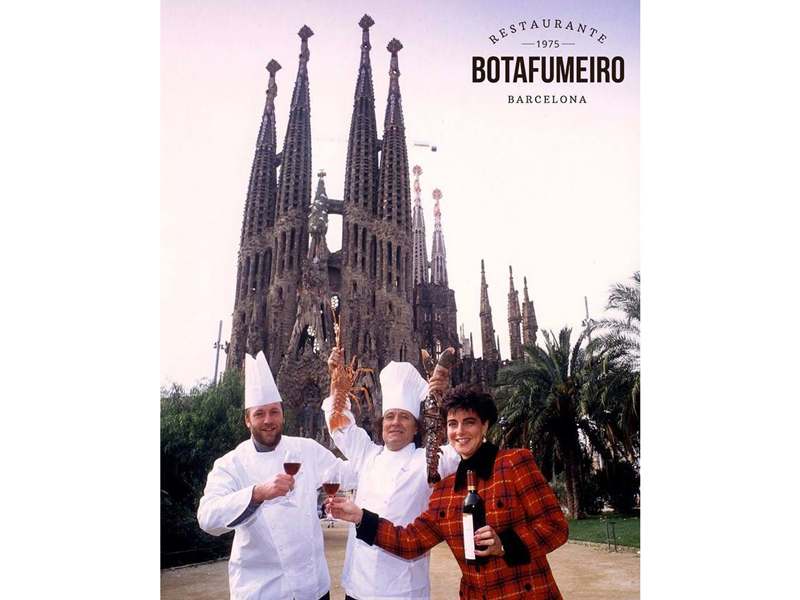

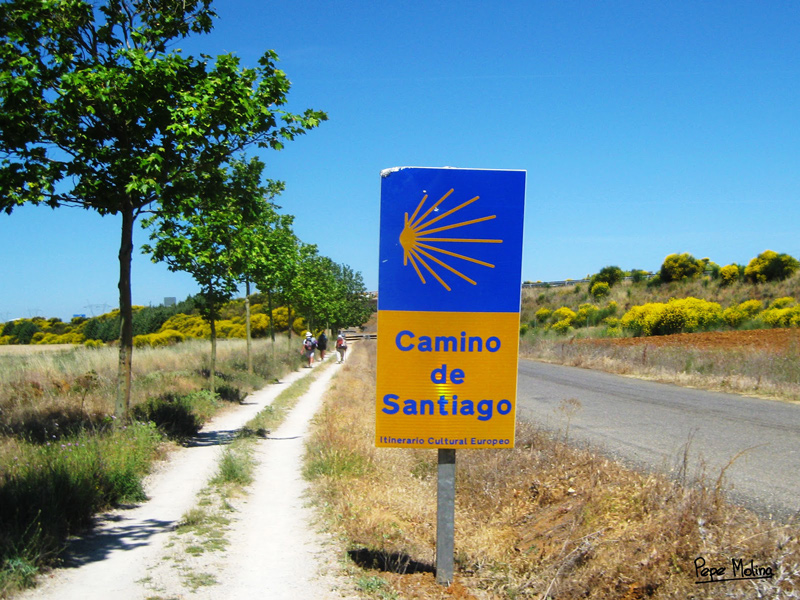

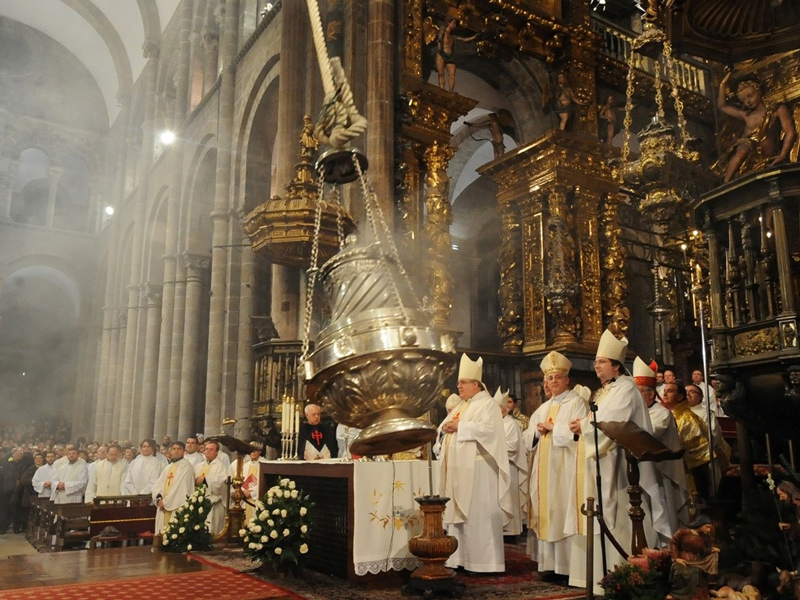
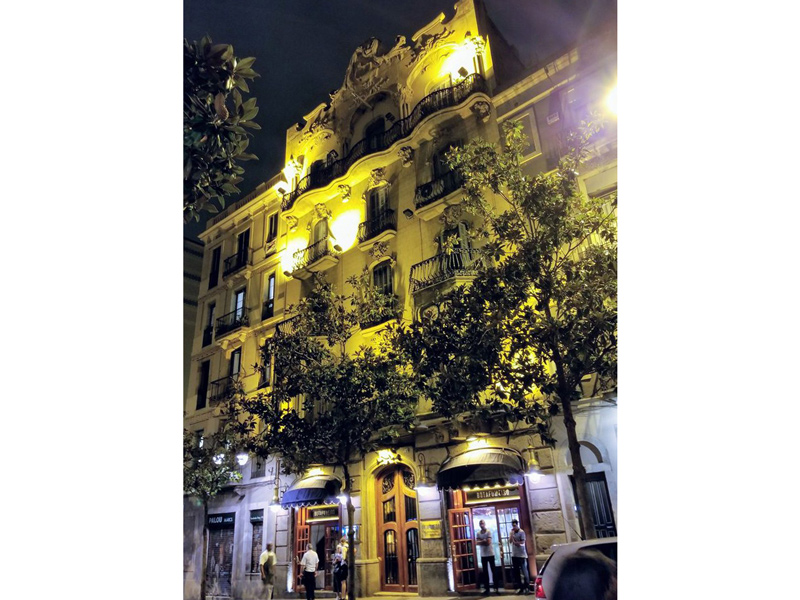
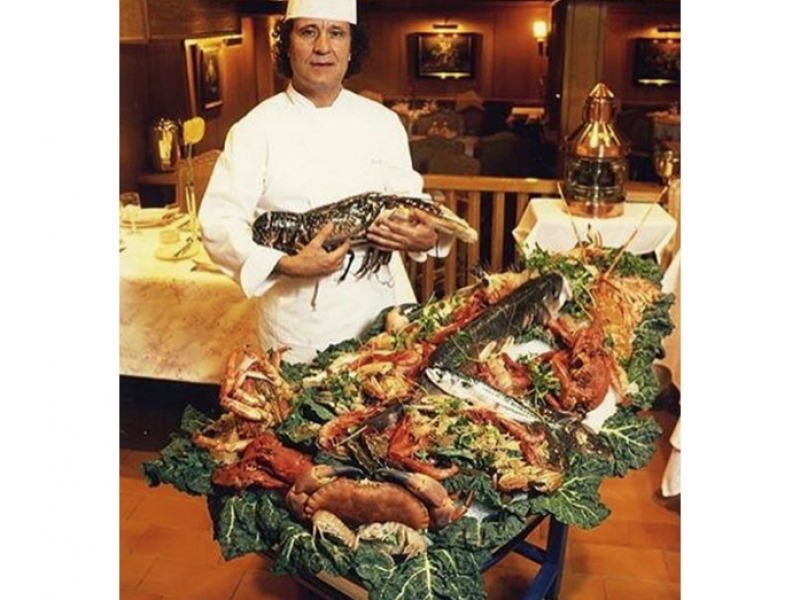
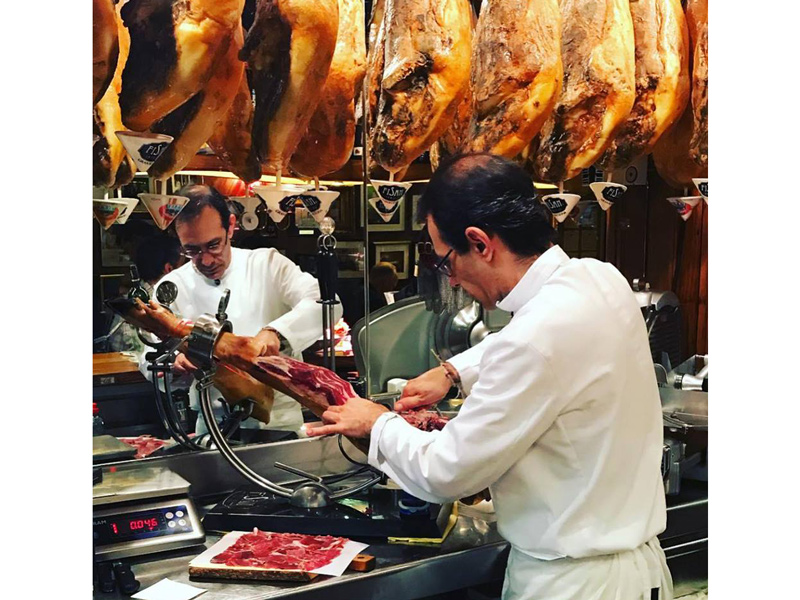
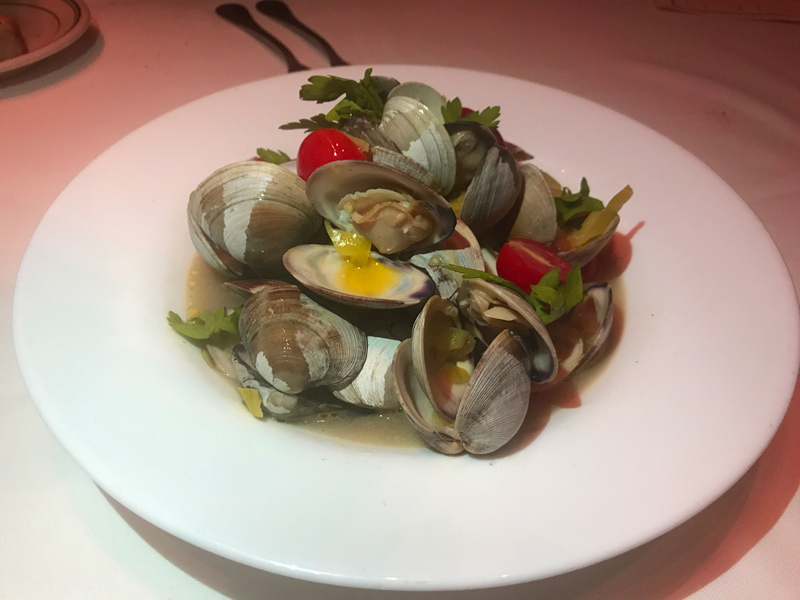
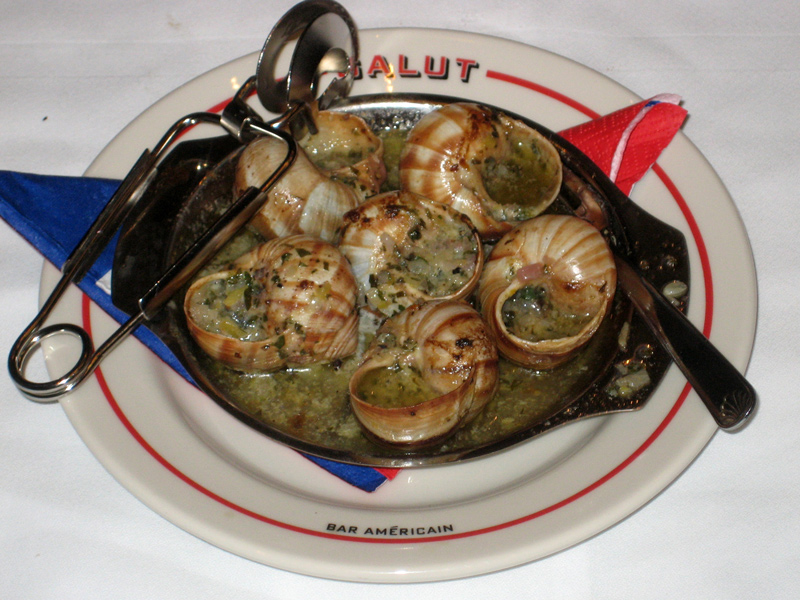
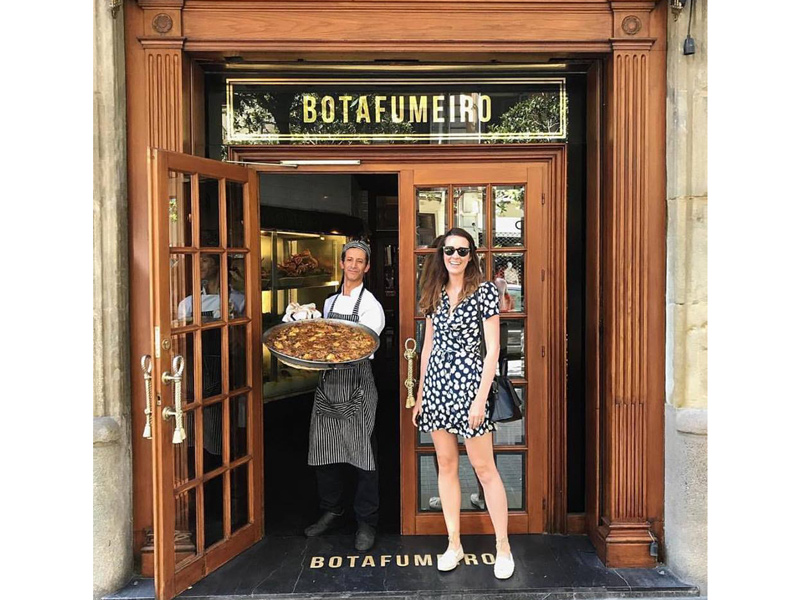
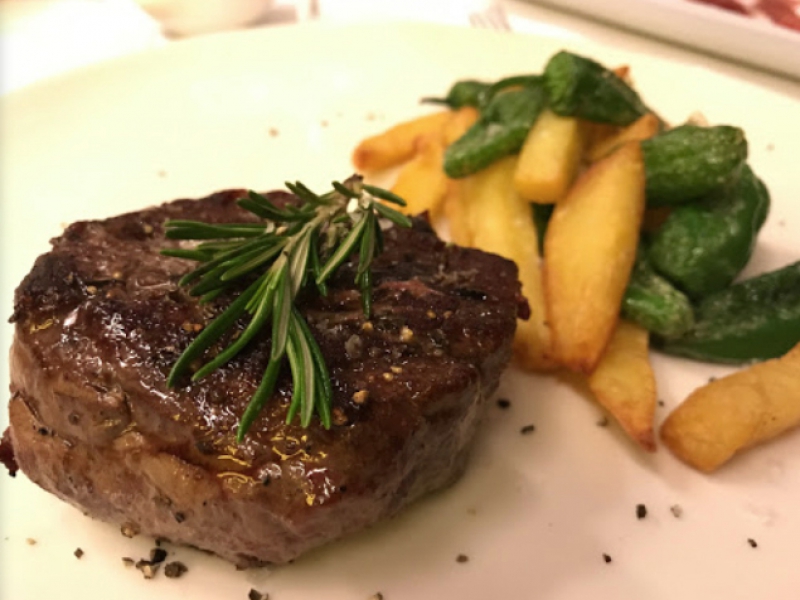
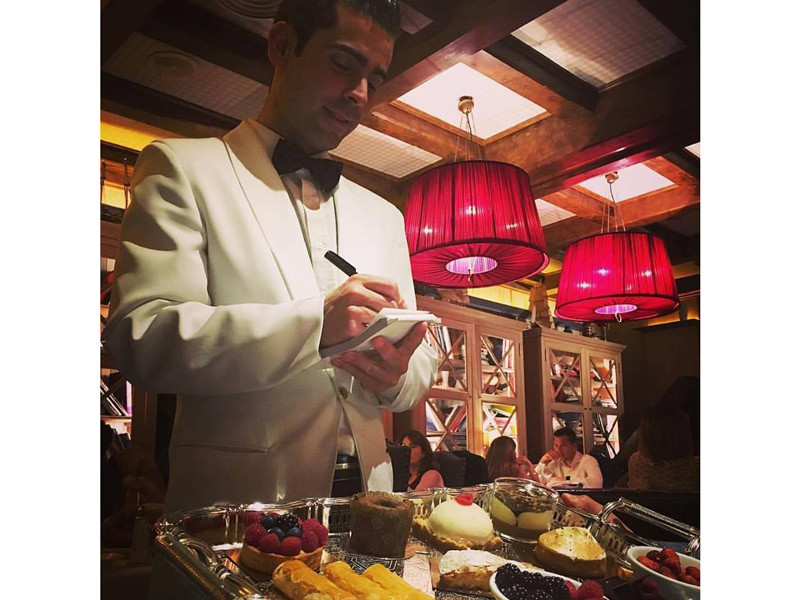
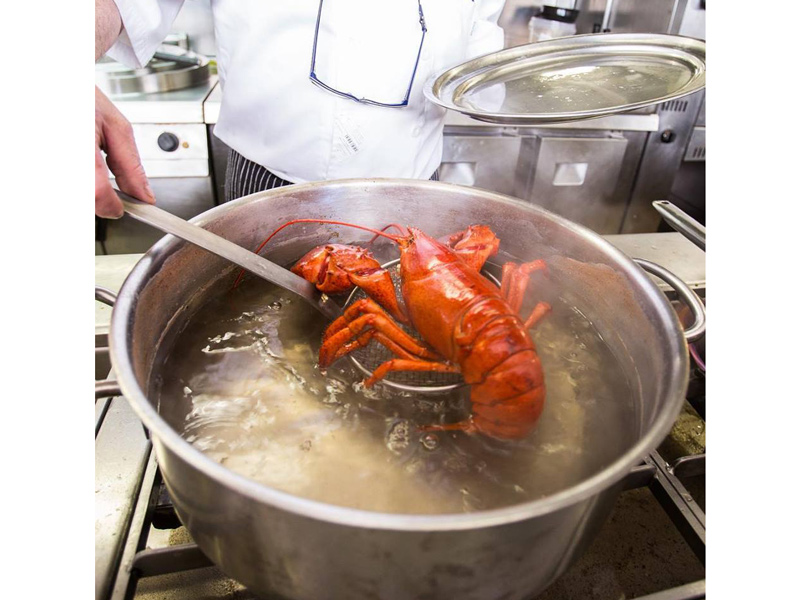
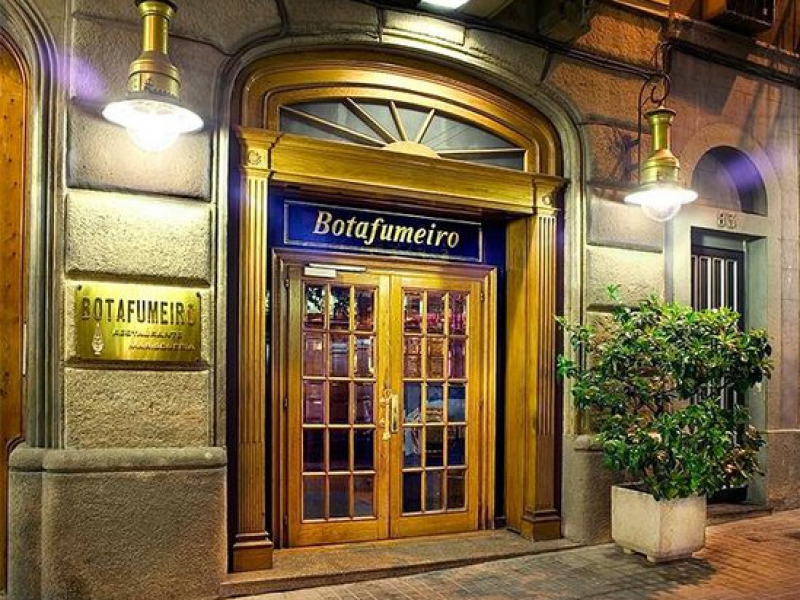
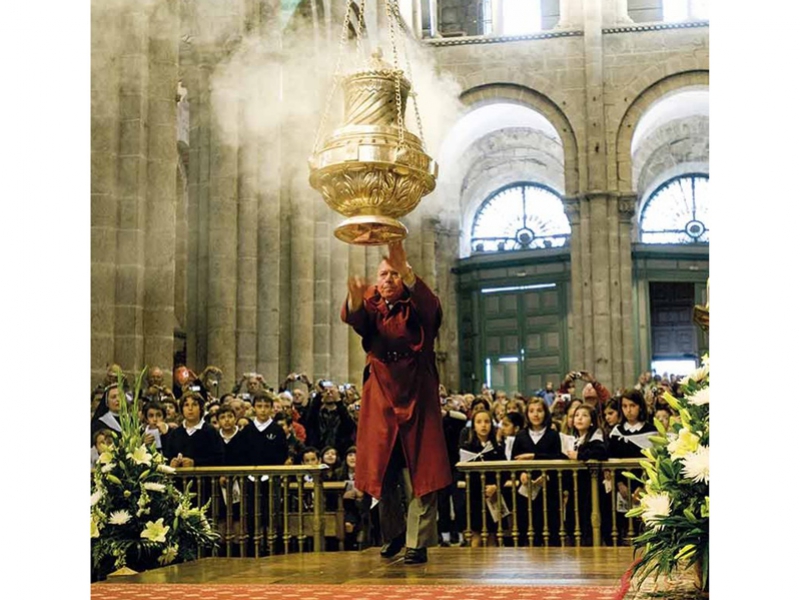
Thanks – On my nexdt visit to Barcelona I will try this restaurant for sure. We have taken cruise ships from there a couple times and love the city. It is very vibriant and the architecture is awesome.
We love your blogs – keep them coming.